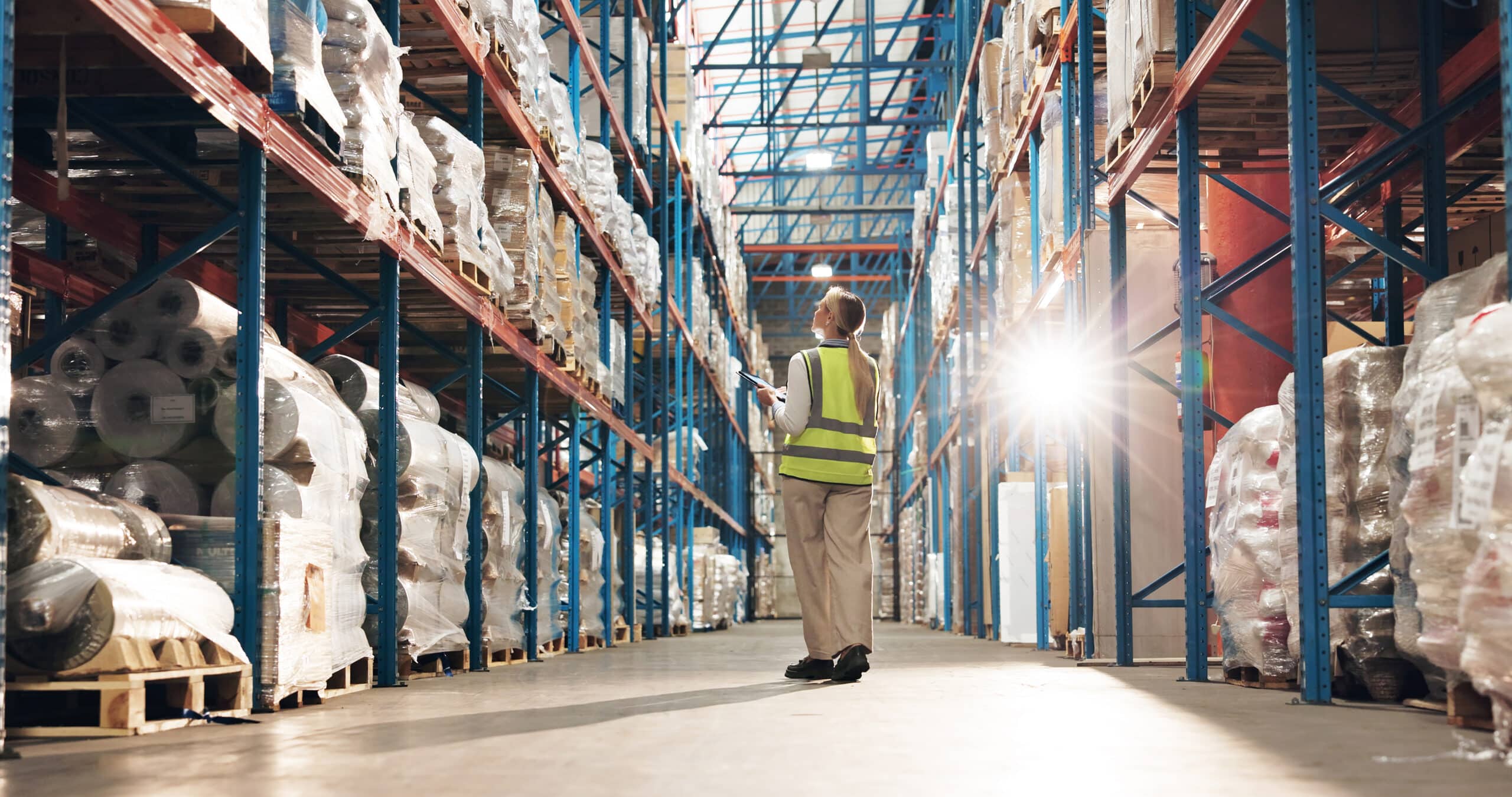The use of robotics and automation in the supply chain is nothing new. Since first appearing in the supply chain in the 1950’s, these technologies have become integral to everything from warehouse operations to transportation logistics. As new technologies are deployed and developed, they play even more critical roles in the supply chain. Today, sophisticated robotics and automation in the supply chain enhance efficiency, reduce costs, improve accuracy, and boost the customer experience.
Here’s everything you need to know about the current state of robotics and automation in the supply chain, including key technologies, benefits, and best practices for deployment.
The Current State of Robotics & Automation in the Supply Chain
If you feel supply chain technology is rapidly changing, that’s because it is. The pace of technological advancement today is so significant that it has launched us into the next industrial revolution. Called the Fourth Industrial Revolution, of Industry 4.0, this era is marked by “connectivity, advanced analytics, automation, and advanced-manufacturing technology.” This means significant ongoing advancements in robotics and automation in the supply chain.
Supply chain businesses are putting these new technologies to work – studies show that robotics use is up 10% in factories worldwide. Further data demonstrates that companies are significantly increasing their investments in automation, particularly when it comes to logistics and fulfillment.
Which robotics and automation technologies are commonly being used in the supply chain? Here are some of the innovations that are reshaping logistics and inventory management:
Autonomous Mobile Robots (AMRs) and Automated Guided Vehicles (AGVs)
AMRs and AGVs play a critical role in warehouse automation, optimizing the physical movement of goods with minimal human intervention. AMRs use sensors, cameras, and AI to navigate dynamically, adapting to their surroundings and optimizing routes in real time. AGVs follow predefined paths using magnetic strips, sensors, or laser guidance, making them ideal for structured warehouse environments.
Artificial Intelligence (AI) and Machine Learning (ML)
AI and ML transform supply chain decision-making by analyzing vast data, predicting trends, and providing intelligent suggestions. Here are some examples of how these technologies are used:
- Demand forecasting: AI-powered algorithms predict future demand by analyzing historical data, market trends, and external factors.
- Predictive maintenance: With predictive maintenance, sensors and AI tools monitor equipment performance, anticipating failures before they occur to reduce downtime.
- Transportation optimization: AI and ML can enhance route planning for transportation, reducing fuel costs and improving delivery times and the customer experience
Internet of Things (IOT) and sensors
IoT-enabled devices provide real-time visibility into supply chain operations by tracking assets, vehicles, and conditions. For example, smart sensors track shipment conditions (temperature, humidity, vibration) to ensure product quality, while RFID tags and GPS improve inventory tracking.
Benefits of Robotics & Automation in Supply Chain Planning
Integrating robotics and automation in the supply chain has revolutionized logistics, warehousing, and inventory management. These technologies provide numerous benefits, from reduced costs to improved supply chain resilience.
1. Increased efficiency and speed
Supply chain systems that use robotics and automation significantly speed up their processes. For example, warehouse robotics move inventory faster than human workers, reducing order fulfillment times, while AI-powered data analysis helps drive speedy decision-making.
2. Reduced operational costs
While the initial investment in robotics and automation might be high, the long-term cost savings can be substantial. Consider that automation reduces the need for large labor forces, lowering labor costs. Meanwhile, predictive maintenance of automated equipment minimizes downtime and repair expenses, and intelligent demand forecasts prevent overstocking and shortages.
3. Enhanced accuracy and reduced human error
Automation eliminates common human errors in supply chain operations. For example, AI-powered inventory tracking ensures accurate stock levels and prevents discrepancies, while warehouse robotics helps accurately pack products for shipment.
4. Improved customer satisfaction
Automation is critical in meeting customer expectations with e-commerce and online shopping, driving consumer trends and expectations. For example, autonomous robots pick, pack, and ship orders quickly, reducing lead times, while advanced warehouse management systems ensure seamless inventory allocation for faster dispatch.
5. Increased agility and scalability
Automated supply chains can easily scale up or down, adapting to real-time demand fluctuations. AI and IoT devices allow instant adjustments to stock levels, ensuring agility in response to market trends. Meanwhile, cloud-based supply chain systems allow remote monitoring and easy stakeholder collaboration.
6. Enhanced resilience
Increased resilience is one of the most significant advantages of robotics and automation in supply chain planning. With global supply chains still vulnerable (due to factors ranging from natural disasters to geopolitical tensions), businesses must be prepared to adapt quickly. Demand forecasting systems enable companies to anticipate disruptions and adjust inventory levels proactively. At the same time, IoT and real-time monitoring provide full visibility into supply chain operations, allowing for quick intervention if issues arise.
Best Practices for Robotics & Automation in Supply Chain Planning
Robotics and automation in the supply chain can be powerful catalysts for success. However, effectively integrating these technologies requires a strategic approach to maximize efficiency, reduce risks, and ensure seamless deployment.
Here are some best practices to consider:
1. Start with a clear strategy and a roadmap
Whether you already use robotics and automation and are looking to upgrade or you’re introducing technologies for the first time, you should start by defining your goals. Developing a plan can help you choose your technological investments wisely and deploy them successfully.
Begin by identifying key areas where new technology can provide the most impact (warehousing, transportation, demand forecasting), establish clear performance metrics (cost savings, order fulfillment speed), and set realistic timelines.
2. Leverage data for decision-making
Automation operates on a foundation of data. With that in mind, ensure your data is as accurate and up-to-date as possible. Consider implementing AI and machine learning for demand forecasting and using IoT sensors and RFID tracking to improve inventory visibility.
3. Choose scalable, interoperable technologies
Supply chain needs evolve over time, and so should your automation solutions. Invest in scalable, modular systems that can be deployed for different tasks. Also, ensure that software and hardware systems integrate smoothly with existing ERP and WMS systems.
4. Continuously monitor, optimize, and innovate
Robotics and automation in supply chains are not one-and-done processes; they require continuous monitoring and improvement to remain relevant and impactful. To keep your systems up-to-date and cost-effective, regularly evaluate performance metrics to measure the ROI of your efforts. Also, consider testing and implementing emerging technologies and staying updated on trends to remain competitive in this rapidly evolving market.
Master Robotics & Automation with StockIQ
Robotics and automation are only two pieces of the supply chain puzzle. To improve supply chain planning accuracy, visibility, and outcomes, you need a comprehensive inventory management solution that gives you unparalleled control and visibility into your operations. For that, you can turn to StockIQ.
StockIQ is inventory optimization software built for businesses like yours. Our user-friendly supply chain management software lets you control inventory, simplify ordering, and improve forecasting.
Are you interested in seeing how StockIQ can improve the way you approach supply chain planning? Contact us today or request a StockIQ demo.

